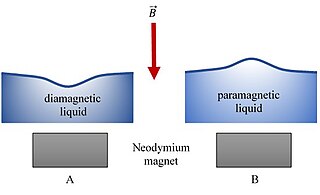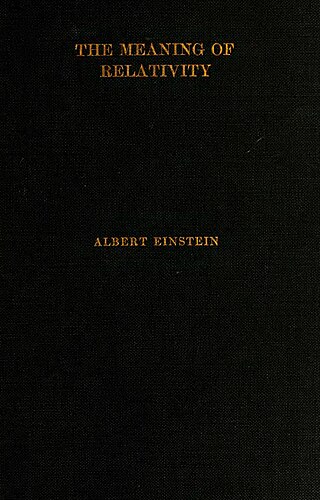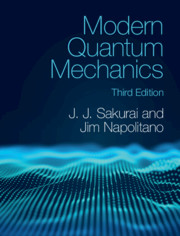Newton's laws of motion are three laws that describe the relationship between the motion of an object and the forces acting on it. These laws, which provide the basis for Newtonian mechanics, can be paraphrased as follows:
- A body remains at rest, or in motion at a constant speed in a straight line, except insofar as it is acted upon by a force.
- At any instant of time, the net force on a body is equal to the body's acceleration multiplied by its mass or, equivalently, the rate at which the body's momentum is changing with time.
- If two bodies exert forces on each other, these forces have the same magnitude but opposite directions.
In physics, action is a scalar quantity that describes how the balance of kinetic versus potential energy of a physical system changes with trajectory. Action is significant because it is an input to the principle of stationary action, an approach to classical mechanics that is simpler for multiple objects. Action and the variational principle are used in Feynman's quantum mechanics and in general relativity. For systems with small values of action similar to Planck's constant, quantum effects are significant.
A concept inventory is a criterion-referenced test designed to help determine whether a student has an accurate working knowledge of a specific set of concepts. Historically, concept inventories have been in the form of multiple-choice tests in order to aid interpretability and facilitate administration in large classes. Unlike a typical, teacher-authored multiple-choice test, questions and response choices on concept inventories are the subject of extensive research. The aims of the research include ascertaining (a) the range of what individuals think a particular question is asking and (b) the most common responses to the questions. Concept inventories are evaluated to ensure test reliability and validity. In its final form, each question includes one correct answer and several distractors.
Michael S. Morris, is a physics professor at Butler University. He earned a PhD in physics from Caltech under the supervision of Kip Thorne. Among his nine published peer-reviewed papers, his most notable theoretical contribution is his pioneering analysis of time travel through traversable wormholes, coauthored in 1987 with Kip Thorne, and Ulvi Yurtsever. Kip Thorne tells the story of this discovery in his 1995 book Black Holes and Time Warps: Einstein's Outrageous Legacy.
The Mechanical Universe...And Beyond is a 52-part telecourse, filmed at the California Institute of Technology, that introduces university level physics, covering topics from Copernicus to quantum mechanics. The 1985-86 series was produced by Caltech and INTELECOM, a nonprofit consortium of California community colleges now known as Intelecom Learning, with financial support from Annenberg/CPB. The series, which aired on PBS affiliate stations before being distributed on LaserDisc and eventually YouTube, is known for its use of computer animation.

Wolfgang Rindler was a physicist working in the field of general relativity where he is known for introducing the term "event horizon", Rindler coordinates, and for the use of spinors in general relativity. An honorary member of the Austrian Academy of Sciences and foreign member of the Accademia delle Scienze di Torino, he was also a prolific textbook author.
Francis Weston Sears was an American physicist. He was a professor of physics at MIT for 35 years before moving to Dartmouth College in 1956. At Dartmouth, Sears was the Appleton Professor of Physics. He is best known for co-authoring University Physics, an introductory physics textbook, with Mark Zemansky. The book, first published in 1949, is often referred to as "Sears and Zemansky", although Hugh Young became a coauthor in 1973.
In physics, coherence theory is the study of optical effects arising from partially coherent light and radio sources. Partially coherent sources are sources where the coherence time or coherence length are limited by bandwidth, by thermal noise, or by other effect. Many aspects of modern coherence theory are studied in quantum optics.

Spin-stabilized magnetic levitation is a phenomenon of magnetic levitation whereby a spinning magnet or array of magnets is levitated via magnetic forces above another magnet or array of magnets, and stabilised by gyroscopic effect due to a spin rate that is neither too fast, nor too slow to allow for a necessary precession.
Francis Goddard Slack was an American physicist. He was a physics teacher, researcher, and administrator in academia who was renowned for placing equal emphasis on teaching and on research.
Stanley S. Ballard (1908–1998) was an American physicist, specializing in optics. He was president of the Optical Society of America in 1963 and of the American Association of Physics Teachers during 1968–69. In 1986 he was awarded the Oersted Medal. During World War II, Ballard served as a Commander in the United States Navy. From 1956 to 1959 he was the President of the International Commission for Optics.

Algodoo is a physics-based 2D freeware sandbox from Algoryx Simulation AB as the successor to the popular physics application Phun. It was released on September 1, 2009 and is presented as a learning tool, an open ended computer game, an animation tool, and an engineering tool.
The Lillian McDermott Medal, established in 2021, is awarded annually by the American Association of Physics Teachers (AAPT). Named after Lillian Christie McDermott, the Medal "recognizes those who are passionate and tenacious about improving the teaching and learning of physics and have made intellectually creative contributions in this area".
Mark Waldo Zemansky was an American physicist. He was a professor of physics at the City College of New York for decades and is best known for co-authoring University Physics, an introductory physics textbook, with Francis Sears. The book, first published in 1949, is often referred to as "Sears and Zemansky", although Hugh Young became a coauthor in 1973.

In physics, the Moses effect is a phenomenon of deformation of the surface of a diamagnetic liquid by a magnetic field. The effect was named after the biblical figure Moses, inspired by the mythological crossing of the Red Sea in the Old Testament.

The Meaning of Relativity: Four Lectures Delivered at Princeton University, May 1921 is a book published by Princeton University Press in 1922 that compiled the 1921 Stafford Little Lectures at Princeton University, given by Albert Einstein. The lectures were translated into English by Edwin Plimpton Adams. The lectures and the subsequent book were Einstein's last attempt to provide a comprehensive overview of his theory of relativity and is his only book that provides an accessible overview of the physics and mathematics of general relativity. Einstein explained his goal in the preface of the book's German edition by stating he "wanted to summarize the principal thoughts and mathematical methods of relativity theory" and that his "principal aim was to let the fundamentals in the entire train of thought of the theory emerge clearly". Among other reviews, the lectures were the subject of the 2017 book The Formative Years of Relativity: The History and Meaning of Einstein's Princeton Lectures by Hanoch Gutfreund and Jürgen Renn.

Modern Quantum Mechanics, often called Sakurai or Sakurai and Napolitano, is a standard graduate-level quantum mechanics textbook written originally by J. J. Sakurai and edited by San Fu Tuan in 1985, with later editions coauthored by Jim Napolitano. Sakurai died in 1982 before he could finish the textbook and both the first edition of the book, published in 1985 by Benjamin Cummings, and the revised edition of 1994, published by Addison-Wesley, were edited and completed by Tuan posthumously. The book was updated by Napolitano and released two later editions. The second edition was initially published by Addison-Wesley in 2010 and rereleased as an eBook by Cambridge University Press, who released a third edition in 2020.
Joseph Valasek was an American physicist and professor emeritus of physics at the University of Minnesota. He specialized in geometrical and physical optics, experimental optics and spectroscopy, and x-rays. He is credited with the discovery of ferroelectricity, which he identified using Rochelle salts.





